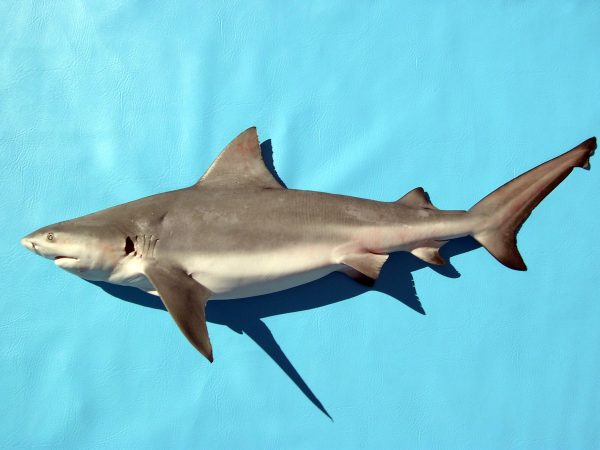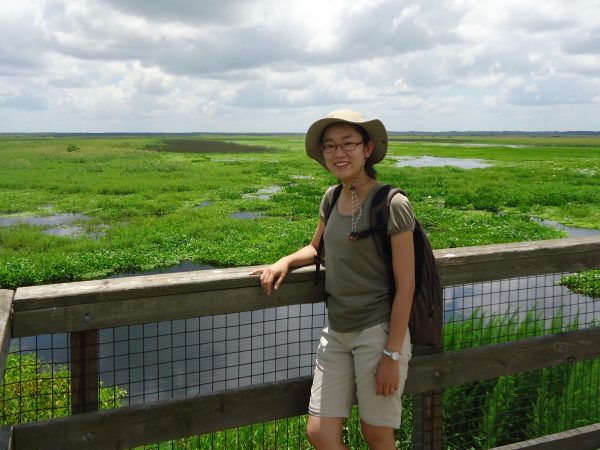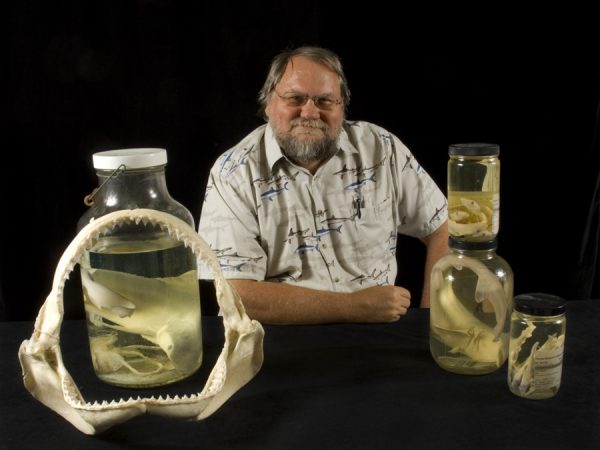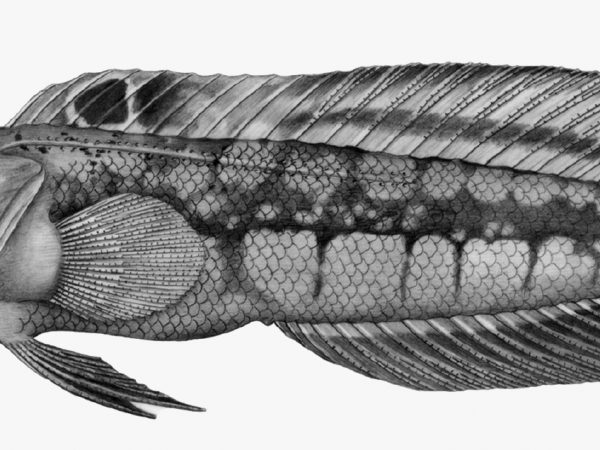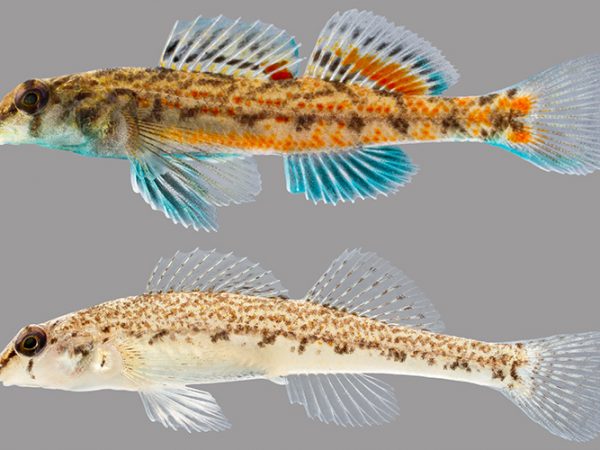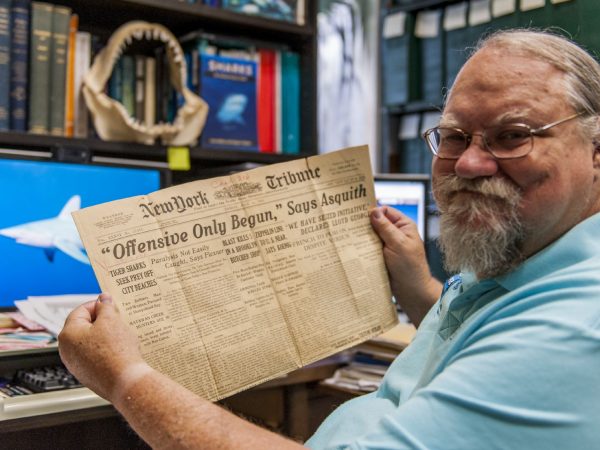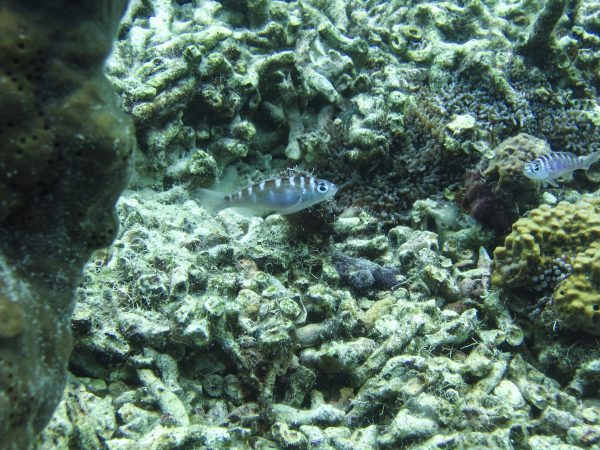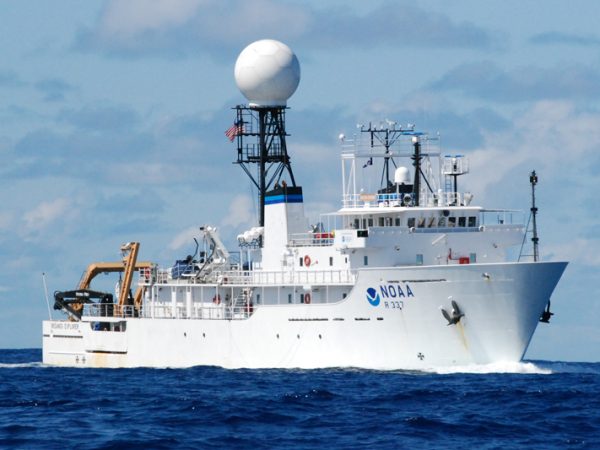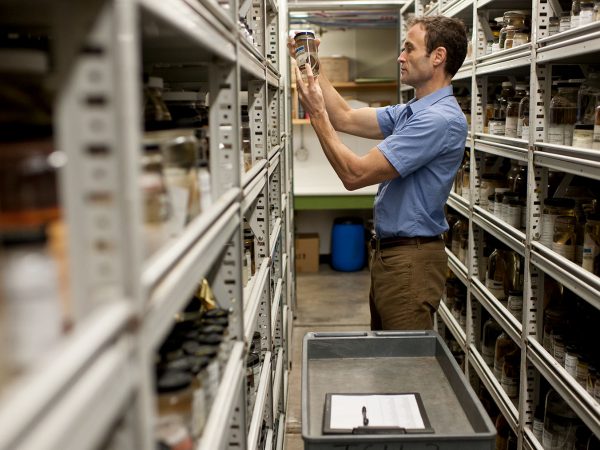Shark scavenging helps reveal clues about human remains
Shark feeding habits are helping scientists identify marks on human bones found in the ocean. By analyzing shark scavenging behavior,…
Read More
2017 NSF Dissertation Improvement Grants
Congratulations to our grad students! Four Florida Museum grad students have been awarded NSF Doctoral Dissertation Improvement Grants. These are…
Read More
Global shark attacks drop to annual average in 2016
After 2015’s record-busting 98 shark attacks, calmer waters prevailed in 2016. The University of Florida’s International Shark Attack File reported…
Read More
Jawfish, bandfish and systematist William Smith-Vaniz
Our ichthyology Research Associate William Smith-Vaniz has described a new species of jawfish, Opistognathus ensiferus, in a paper published in Zootaxa…
Read More
Florida fishes book features live photos
Freshwater fishes in Florida are getting a close-up 60 years in the making. Florida Museum of Natural History ichthyologists have…
Read More
How a century of fear turned deadly for sharks
Before the summer of 1916, there was still debate about whether sharks could kill humans. Most people were not even…
Read More
Relationship advice from a gender-bending fish
A 3-inch, monogamous, hermaphrodite proves the saying “there’s plenty more fish in the sea” isn’t always the case. For the tiny…
Read More
Shark attacks hit all-time high in 2015
It’s the kind of record no one wants to break: the most shark attacks in a single year. But 2015 did…
Read More
A new age for exploring the uncharted deep sea
Imagine looking down on where you live from 20,000 feet above. Now imagine 95 percent of what’s below has never…
Read More
Why Science? Ichthyology
Rob Robins, a senior biologist in the Florida Museum of Natural History Ichthyology Division, explains his background and what led…
Read More
